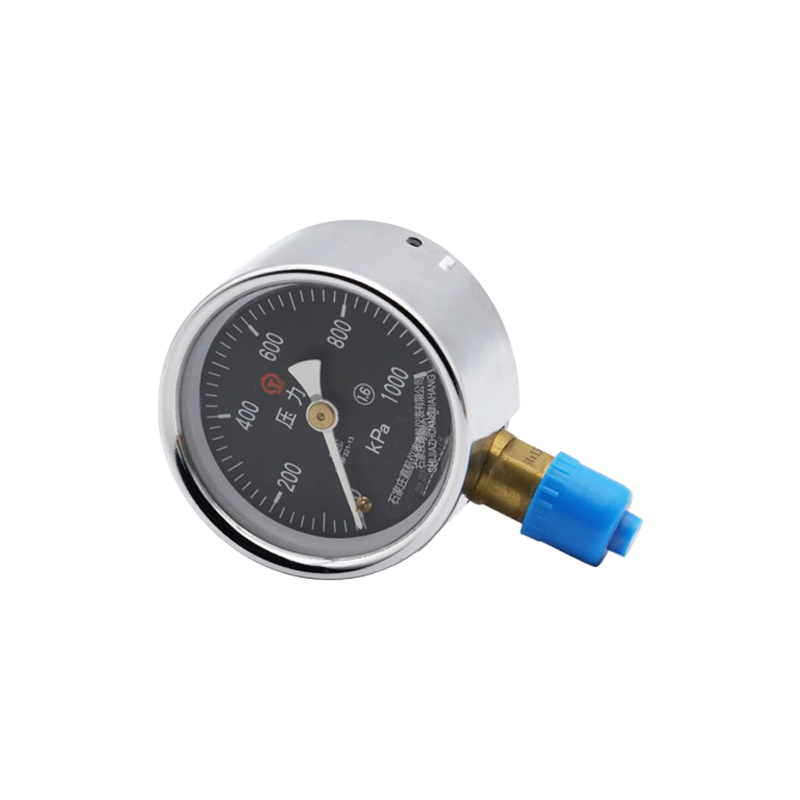
aug . 18, 2024 06:22 Back to list
Understanding Hydraulic Differential Pressure Gauges for Accurate Measurements in Systems
Understanding the JAH Differential Pressure Gauge in Hydraulic Systems
In the world of hydraulic systems, maintaining optimal pressure levels is crucial for efficient operation and safety. One essential instrument used in monitoring these pressures is the differential pressure gauge, particularly the JAH model. This article delves into the significance, functionality, and applications of the JAH differential pressure gauge in hydraulic systems.
What is a Differential Pressure Gauge?
A differential pressure gauge measures the difference in pressure between two points in a system. Unlike standard pressure gauges that only measure absolute or gauge pressure, differential pressure gauges provide insights into how pressure varies across various components. This is particularly important in hydraulic systems, where pressure differences can significantly impact performance.
The Importance of the JAH Differential Pressure Gauge
The JAH differential pressure gauge is designed for robustness and accuracy, making it suitable for various industrial applications. In hydraulic systems, these gauges are vital for monitoring pressure drops across filters, pumps, and other components. By providing real-time data on pressure differentials, the JAH gauge helps operators make informed decisions about system maintenance and performance optimization.
Functionality of the JAH Differential Pressure Gauge
The JAH gauge operates on the principle of pressure sensing through two input ports. These ports are connected to the points of interest within a hydraulic system. The gauge incorporates a diaphragm or a Bourdon tube, which reacts to pressure changes. When a differential pressure is detected, the gauge provides a visual reading, often displayed on an analog dial or a digital screen.
jah differential pressure gauge hydraulic

One of the key features of the JAH gauge is its ability to withstand extreme conditions. It is built with high-quality materials that resist corrosion and wear, ensuring longevity even in harsh environments. Additionally, the gauge’s design allows for easy installation and maintenance, which is essential for keeping hydraulic systems operational without unnecessary downtime.
Applications in Hydraulic Systems
The applications of the JAH differential pressure gauge are diverse. In hydraulic filtration systems, for instance, the gauge is instrumental in signaling when filters need to be replaced. A significant drop in pressure differential indicates that the filter is becoming clogged, which can lead to reduced efficiency or pump failure. Monitoring this pressure differential ensures that maintenance can be performed proactively, thereby extending the life of the filtration system.
In pump applications, the gauge aids in assessing pump performance. A sudden change in differential pressure may indicate potential issues such as wear or cavitation, allowing for timely interventions. This not only protects equipment but also enhances operational efficiency.
Moreover, the JAH differential pressure gauge is used in various industries, including manufacturing, oil and gas, water treatment, and chemical processing. Each application relies on accurate pressure readings to optimize processes and ensure safety standards.
Conclusion
In summary, the JAH differential pressure gauge is an indispensable tool in hydraulic systems. Its ability to provide real-time, accurate measurements of pressure differentials plays a crucial role in monitoring system performance, ensuring safety, and preventing equipment failure. As industries continue to advance and require more sophisticated monitoring solutions, the reliability and durability of the JAH gauge will be paramount in supporting efficient hydraulic operations. Whether in a filter, pump, or any component of a hydraulic system, the JAH gauge serves as a critical component in the quest for operational excellence.
-
High-Precision 5 Valve Manifold Differential Pressure Gauge Suppliers
NewsApr.29,2025
-
High-Precision Diaphragm Vacuum Pressure Gauges Manufacturers & Quotes
NewsApr.29,2025
-
Omega Differential Pressure Gauges High Accuracy & Durability
NewsApr.28,2025
-
Low Pressure Differential Pressure Gauges Precision Solutions & Quotes
NewsApr.28,2025
-
Digital Diaphragm Pressure Gaauge Precision Measurement & OEM Quotes
NewsApr.28,2025
-
Differential Pressure Gauge China Price High-Accuracy & Best Quotes
NewsApr.28,2025
